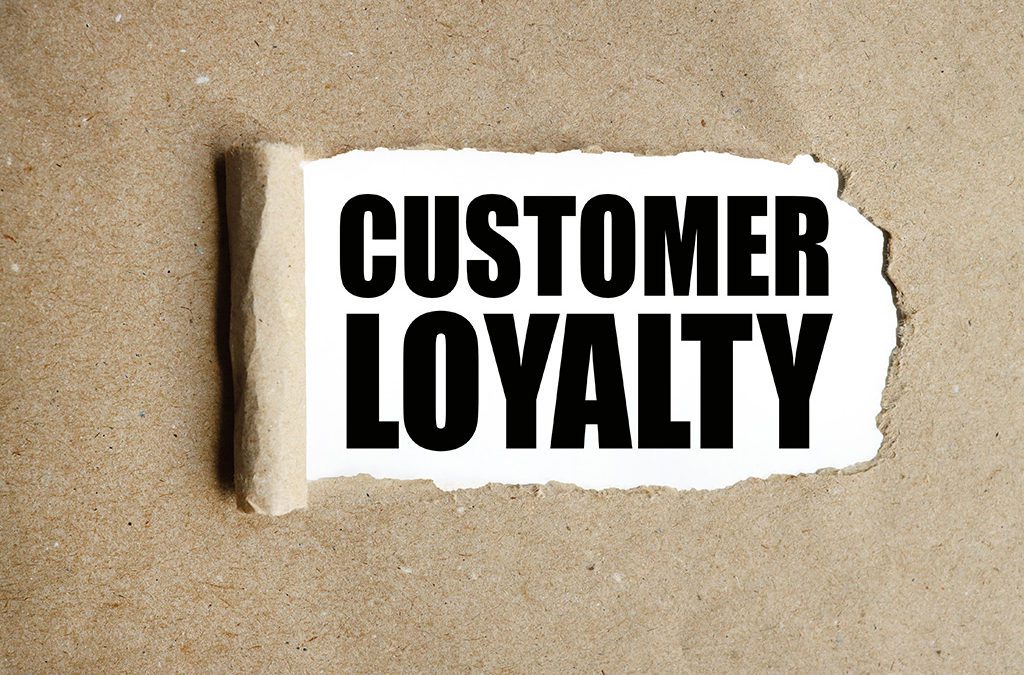
Sep 19, 2021 | Customer Experience
Do you want to keep your customers?
That sounds like a silly question — of course you do! Retaining a customer is better than acquiring a new one. It costs less, you already invested in an existing relationship with them, and they are more likely to refer you to their friends than someone having their first experience with you and your organization.
However, sometimes you might feel it’s not worth the effort, depending on the customer, your attitude at that moment, or both. However, keeping current customers is one of the best things you can do for your business.
Do you have a customer retention strategy? Do your employees know what to do, how to do it, and who should be the go-to person when they want or need help with something that might upset their customers?
If not, this article will show you five ways to save your customers.
#1: Fix their problem
You know the saying “the customer is always right?” Well, it’s actually not true. Even if they are wrong (which does happen), they are still the customer! You must fix their problem as quickly and efficiently as possible to make them happy again. An excellent way to do this is to follow up with your customer via email or phone call shortly after any complaint is registered. Remember, not responding to a customer complaint online is the equivalent of ignoring what they say in person. Address and fix their problems!
#2: Offer an incentive for customer feedback
This is the part where you ask for comments and criticisms. If they are having an issue with your product or service, ask them to provide their contact information so that you can address it properly and perhaps send out a future discount as an incentive.
Offering incentives for feedback can go the extra mile in terms of customer retention. But this isn’t simply about coupons; conceive alternative ways to reward them for their insights. Recognize them for being vocal and recognize their efforts.
#3: Create reward programs that incentivize more purchases
Acknowledge customers with rewards when they purchase from you. Some organizations use a recognition program where points can be accumulated and then later redeemed for discounts, free items, or even gift cards.
Obviously, that isn’t appropriate in some industries – for example, professional services firms. However, the goal here is to inspire you to think about how you can reward your customers for making the choice to do business with you! No matter what your field of endeavor might be, there are creative ways in which you can reward customers ethically so you inspire them to acquire more of your products and services.
#4: Provide higher levels of support for better customers
Customers always appreciate special treatment — and oftentimes, they will purchase more of your products or services to attain it. Make it clear that your best customers have access to enhanced services — for example, 24-hour support lines, instant response to emails or texts, special lines to speed their purchases, and more.
#5: Educate your team to engage with customers and create relationships
You can’t expect your team to create relationships with customers if they don’t know how. Train employees on customer engagement and ask them what type of interaction or communication would feel meaningful to them.
In a multi-generational workforce, your new hires may not have as much experience in interpersonal relationships and communication as you. Or maybe they developed some bad habits in previous work situations.
Don’t let your employees continue to make rookie mistakes. It’s one thing if they don’t know how to communicate with customers, but it’s quite another when they treat them poorly or neglect their needs. Your business has a responsibility to deliver the Ultimate Customer Experience ® — and it isn’t possible to keep customers with a poorly trained workforce in today’s marketplace.
The term “Ultimate Customer Experience®” is a Federally Registered Trademark of our company. If you would like to ensure that your team delivers the highest level of distinction in dealing with your customers so you can retain and expand their business with you, let’s talk about how we can help you make that happen!

Sep 5, 2021 | Customer Experience
What do you want from your customer service experience? Do you want to be given the best of the best, or are you content with mediocre?
No matter what your answer is, most people want something better than they’re getting. While this won’t ensure inadequate service will never happen, here are five pointers on how to become a better customer and receive the Ultimate Customer Experience!®
1: Don’t be a pain in the butt!
This should go without saying — however, all of us have observed a customer that’s a PITB! (Pain In the Butt. And, we can occasionally see this type of customer when we look in the mirror!)
Nobody likes a customer who complains about everything. Even if you have all good intentions, it’s still annoying and frustrating for others. Be considerate and respectful when talking to customer service representatives — they are there to help solve your problems.
2: Don’t be rude
This should also go without saying, but we’ve all been in a customer service situation where someone is being flat-out rude to a representative trying to help them! It’s annoying and frustrating for representatives — plus it reflects badly on your company if you’re the one being disrespectful (or at least perceived that way).
If you’ve had a bad day and are taking it out on the staff, don’t be surprised if your order is made wrong or takes longer than usual to arrive. Treat everyone with respect, no matter how busy they appear.
It’s important to remember that even when you’re not on the job, you represent your company, your community, and your family and friends. It doesn’t take much to simply be pleasant — and it’s worth the effort!
3: Don’t be condescending
It’s not easy to stay calm and polite when someone is being snippy, but it can make all the difference in how a representative perceives you. Keep a smile on your face, even if you’re dealing with rude customer service representatives from time to time.
As long as you are remaining professional (and acting in a pleasant manner), it is much more difficult for them to serve you in an inferior manner.
4: Don’t make the customer representative wait.
It may be tempting to take your time, especially, for example, if you don’t feel like dealing with the customer service representative on the other end of the phone line. However, making a representative wait for an extended period is unacceptable in terms of superior customer service etiquette. Be prepared to communicate with those who are serving you.
This does NOT mean you should refrain from asking questions or seeking advice. However, all employees are under significant pressure nowadays. (And your fellow customers get annoyed when delayed by someone hemming and hawing when they should be ready with a question or request.)
Another example of poor customer service etiquette is loudly talking on your phone or distracting conversations with friends and family. (This also includes playing music or a sportscast others can hear while you wait for your order.) This behavior is annoying to other customers who are sitting just a few seats away.
Also, if the staff requests you move from your current spot because it helps them serve additional customers, understand their needs and their request.
5: Don’t “Mother-Hen”
In other words, don’t be a “helicopter customer” who hovers over the staff and asks them repeatedly if they’ve done something or why it’s taking so long! This is annoying to those working to serve you…and just as infuriating to other customers!
If your order is delayed unacceptably, it’s fine to ask for an update. However, hovering won’t help — it’s like expecting the elevator to arrive more rapidly if you keep pushing the “up” button over and over.
Being a good customer is simple. Be nice, patient and understanding – but simultaneously, don’t be afraid to complain when something’s not done right!
The business you are dealing with has the responsibility to deliver the Ultimate Customer Experience ®. However, that does not preclude that all customers can take steps to ensure they are worthy of the effort required to obtain it!
The term “Ultimate Customer Experience®” is a Federally Registered Trademark of our company. If you would like to ensure that your team delivers the highest level of distinction in dealing with your customers, let’s talk about how we can help you make that happen!
https://ultimatecustomerexperience.com

Jun 27, 2021 | Customer Experience
It was another day of sitting on hold for Jane. She had been waiting for an hour, listening to one boring song after the other. Finally, she hung up and tried again. Once more, there was a long wait before it could become her turn to speak with a customer service agent.
Jane was so frustrated she wanted to scream. She took a deep breath and started over by contacting her local store rather than the company’s toll-free customer service number.
“I’m sorry — for that issue you have to call our customer service line. Be prepared, it’s a long wait. We’re experiencing high call volume,” the local representative said when he answered.
This time Jane angrily hung up without waiting for him to finish his sentence. It didn’t matter that she’d waited all this time – even the local store couldn’t help her promptly and in the manner she had hoped.
For many of us, Jane’s story creates a “been there, done that” response. Just like Jane, you have likely had a similar scenario occur when you were the customer seeking help.
However, when was the last time that you asked yourself an important question: is this a similar experience to the one that your customers are receiving?
This should also lead us to seek additional insight: How do we deal with customer frustration? How can we make customers happy despite their frustrations and our shortcomings?
Our job is to help people. When they call us in a time of need, we must be there to serve them in the manner they have a right to expect. We cannot create distinction if we fail to deliver an Ultimate Customer Experience® to those who want us to be of service to them.
How do you deal with these challenges?
A few strategies:
- Recognize where customers might be coming from when their expectations aren’t met and how your organization may have failed them.
- Obviously, not everything will go right every time but by displaying empathy to customers — even when their upset isn’t our fault — we can move them from frustrated to engaged.
- Listen to customers — sometimes the problem they first state (for example, an issue with a product) isn’t what really has them agitated.
- Sometimes a customer’s first response will be frustration but if you listen closely enough, you’ll discover that underneath all that anger is the kernel of a real concern that needs addressing.
- For example, it might be they felt disrespected by one of your team members. Don’t just hear the problem — listen for the root cause of the dissatisfaction.
- Acknowledge they aren’t alone. When customers are upset, they often feel like no one cares about them or their problem.
- One of the best ways to make someone feel better is by letting them know that what happened was an isolated incident, will be corrected, and is not something they should take personally.
- Apologize to customers when they’re upset. “I’m sorry for the issue you’ve experienced. Is there anything we can do to make it right?” is always a good approach
- Providing proactive, positive feedback to our customers as often as possible.
- Act promptly: Follow up as soon as possible with any requests made during your conversation.
Frankly, there’s no excuse for a customer to be exasperated like Jane was from her dissatisfaction in attempting to obtain assistance. However, by taking the proper action, we can move customers from frustration to engagement. It’s an important step towards creating distinction.
If these insights resonated with you, please share it on your social media! And learn more about our Iconic Inner Circle membership program. (https://IconicInnerCircle.com) We’re ready to help you create a plan for success that will help drive you to meet your goals and dramatically increase the value of experiences that your customers receive!

May 2, 2021 | Business Distinction, Current Event, Customer Experience
There probably is not one single entrepreneur or leader of a large enterprise who would suggest they would want their customers to become less loyal to the business. Yet, even with good intentions, that’s exactly what they are creating.
You may have heard me mention (and maybe many times) how much I dislike the show, “Undercover Boss.” It portends to present a boss who becomes enlightened and finds elements to make better for employees and customers. Instead, in my opinion, it exposes how little some leaders know about what front-line employees and customers are experiencing in their engagements with the business.
This is backed up by a recent article in Harvard Business Review reporting on research by Thomas S. Robertson and Paula Courtney titled, “Understanding The Boomerang Effect of Loyalty Programs.”
Their study discovered that during the pandemic, loyalty programs at many businesses made customers less likely to do business with the organization in the future.
Here’s basically what would happen: a “platinum level” (among the best customers a company can have) would call the special platinum line to get help with a problem or issue. However, the staff on that line either weren’t trained to solve that problem – or the staffing had been cut and were not responsive.
This means they were then bounced to a general area of problems solving – meaning it took more calls and more time for great customers to get help than prospects or average customers!
The study reported, “The results showed that members of loyalty programs not only experienced more service friction than other shoppers but were more likely to struggle to have their issues resolved. For instance, loyalty members surveyed in May required an average of four contacts with the company before reaching a solution, and the process took 5.1 days. Nonmembers needed just 2.8 contacts and 3.3 days.”
In ICONIC, I reveal that my study clearly shows that those leaders and organizations at the highest level of distinction display “Reciprocal Respect.” In other words, Iconics know that if they want their customers to be loyal and engaged, then they must be loyal to and engaged with those customers.
As our world inches toward a return to normality, we all need to be asking these three questions:
- What’s important to our customers right now?
- What problems in the immediate situation could cause the most problems for our customers? (It may not be what was most important a year ago!)
- How have we adjusted so we solve their problems and deliver what they want now?
If you want loyal customers, you must determine what is important to them…right now.
And if you’d like to take your business – and yourself – to the ultimate level of distinction, join our Iconic Inner Circle. There is zero risk – you can cancel at any time – and your first month is FREE. Go to https://IconicInnerCircle.com for more information.

May 2, 2021 | Customer Experience
I hear companies testify they are “customer-centric” or “customer-focused.” Yet, when I ask them if their customers – and how they will be impacted – are at the core of every decision they make, the subtle response is, “You gotta be kidding, right?”
Instead, our customary concerns are how decisions will impact our stock price, or our market share, or a myriad of other aspects… rather than the impact upon the customer. We step over potential dollars in customer loyalty and repeat business to save dimes on reduced staffing and training.
We should always be searching and learning – and filling the gaps between what we deliver and what our customers and clients really want.
It begins with the first interaction you and your colleagues have with your customers, clients and prospects.

Apr 25, 2021 | Business Distinction, Customer Experience, ICONIC, Leadership, News & Info, Sales & Retail
IBM just released an interesting study that surveyed 14,000 people in nine countries. It revealed that more than 70% of people are now more likely to work for – or continue their employment with – a company with a good record or reputation on the environment. It also said 55% of people are now more willing to pay more to purchase from a company that represents itself as “sustainable and environmentally responsible.”
CEO Daily reports that IBM also found that now 84% of CEOs stated in a separate study that sustainability will be important to their business strategy for 2022 – as opposed to just 32% who said it in 2018.
Yet may I be so bold to suggest that these numbers aren’t simply about the environment and health of the planet.
Instead, it’s about putting people first.
It is obviously incongruent to suggest that 70+% of people want to work for a business that has a good record on climate change – but doesn’t care about their employees or customers.
What I believe these figures state is the vast majority of today’s customers – many of them from the Millennial generation – are tired of working for and purchasing from organizations that are putting their products and programs before the people who make and use them.
(Consider there are over 72 million Millennials – and the oldest of that generation is now hitting the age of 40. Too many Boomers and Gen Xers have talked about them like they are the “coming generation.” Bull! They’re here and they are changing the way you must do business.)
In other words, what’s happening right now is a major reinforcement of the Four Cornerstones of Distinction. You’ve got to have Clarity regarding your commitment to people and the planet. You need to be Creative in your approach, so you become more attractive and distinct to the customers you desire and the quality of employees you engage. You must Communicate the story of your commitment to people and the benefits they receive from your values. And these times require a Customer Experience Focus so the promise you make is backed by the performance you deliver.
These steps will create distinction for you in a time that demands we put people first.
By the way, if you’d like to drill deeper into how you can create the ultimate level of distinction, I’d love to have you try our Iconic Inner Circle.
When you join, you’ll have immediate access to specific virtual programs on how to craft and deliver a Distinctive Story…what you need to know to use the tools of today to communicate virtually, whether on a sales call or a group meeting, with Post-Pandemic Events…and discover the specific program to make your over-reaching values and your daily actions congruent with our course on Personal Distinction.
In addition, I present a weekly lesson on a single, specific step you need to take to reach this ultimate level of distinction. AND we’ll soon launch a monthly live virtual program for all members of the group to answer your questions and discuss your challenges.
Here’s the best part – your first month is absolutely FREE.
I believe in this program so much, I know that once you experience it, you will want to continue. (Especially since it’s such a small investment for such an extraordinary return!)
Just go to https://IconicInnerCircle.com for all the info. I hope to see YOU in our Inner Circle!
And, as always, thanks for reading and sharing this weekly post.






